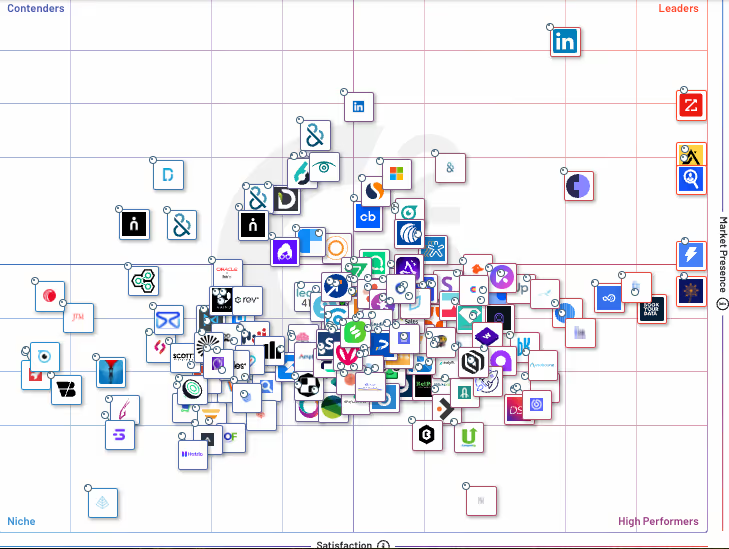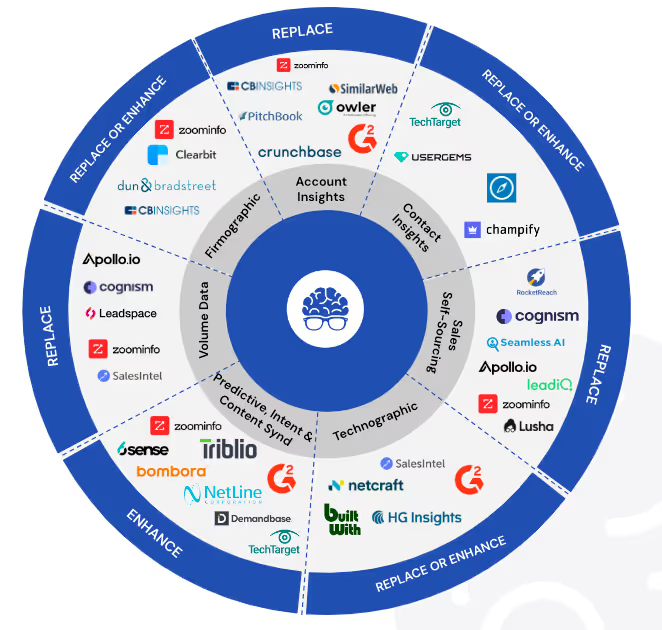In the ever-evolving landscape of B2B sales and marketing, traditional static databases like ZoomInfo and Apollo are rapidly losing their relevance. These platforms, which have long relied on a one-size-fits-all approach to data, are now being abandoned in favor of more flexible, real-time data solutions. The old model of “leasing” the same data as everyone else in the market is giving way to a new paradigm where go-to-market (GTM) teams take ownership of their data, customizing it to their unique needs and refreshing it at a frequency that matches their business dynamics.
This shift isn’t just theoretical—it’s being driven by real-world demands and challenges that are reshaping the data landscape.
The Fall of Static Data Giants
For years, platforms like ZoomInfo and Apollo have been the go-to tools for sales and marketing teams looking to fill their pipelines. These static databases provided vast amounts of contact information, company details, and industry insights, all packaged in a neat, easy-to-use format. But as the market has become more competitive, the limitations of these platforms have become glaringly obvious.
The Diminishing Returns of Static Data
When every company in the same industry is using the same data source, it becomes increasingly difficult to differentiate your outreach and build a unique market presence. The result? Saturation, diminishing returns, and a race to the bottom as everyone fights over the same leads. According to a recent report by Forrester Research, "78% of sales leaders report that their teams struggle with data quality issues, often because they rely on static, outdated sources."
Even LinkedIn, the professional networking behemoth, has recognized the shift. Recently, they decided to kill off their Sales Insights (LSI) tool, signaling a broader industry movement away from pre-built data solutions. As Nick Worth, a senior VP at Dun & Bradstreet, put it, "The market is moving towards dynamic, customized data solutions because the one-size-fits-all model simply doesn’t meet the needs of modern revenue teams anymore."

The Rise of Real-Time, Custom Data Solutions
Today’s leading GTM teams are no longer content with the status quo. They’re hiring Data Ops experts and building unique data acquisition engines that allow them to construct highly targeted audiences, ensure comprehensive market coverage, and develop industry-specific data sets that drive better results.
Real-World Success with Custom Data
This shift isn’t just about access to fresher data; it’s about control. When teams own their data strategy and have the flexibility to update and refresh it in real time, they can adapt more quickly to market changes, identify new opportunities faster, and ultimately, build more robust pipelines.
Take the case of Microsoft, which revamped its entire GTM strategy by shifting to a custom data acquisition model. By integrating real-time data and dynamic audience segmentation, Microsoft was able to increase its pipeline creation by 35% in just one quarter. Satya Nadella, Microsoft’s CEO, noted, "Owning our data and continuously refining it to align with our business needs has been a critical driver in our ability to maintain market leadership."
Similarly, AWS has leveraged custom data solutions to identify new markets and tailor its offerings more precisely. According to Teresa Carlson, VP of Worldwide Public Sector at AWS, "Our ability to pivot and adapt our data strategy in real time has enabled us to capture opportunities that we would have otherwise missed using traditional data sources."
The Downfall of Pre-Built Data: A Commentary
The days of pre-built data are numbered. Tools like 6sense and ZoomInfo are experiencing unprecedented churn rates and growing customer dissatisfaction. A recent survey by Gartner found that "over 60% of companies that rely on pre-built data platforms are considering switching to more flexible, custom data solutions within the next 12 months."
As companies wake up to the reality that these static databases are no longer delivering the value they once promised, they’re turning to more dynamic solutions that offer greater flexibility and control. Ben Strickland, a data strategist at a leading tech firm, shared, "We saw a 20% increase in conversion rates after moving away from static databases and building our own data engine. It’s not just about having data; it’s about having the right data, at the right time, for the right purpose."
Taking ownership of your data strategy is no longer a luxury—it’s a necessity. Modern revenue teams that fail to evolve and continue relying on outdated, pre-built data tools are at risk of falling behind. In contrast, those that invest in custom data acquisition and management tools are better positioned to build sustainable, high-performing business engines that drive long-term growth.
The Future of GTM Strategy: Owning Your Data
The future of GTM strategy lies in bespoke data solutions that empower teams to control their own destiny. As Michael Schrage, a research fellow at MIT Sloan School of Management, puts it, "Data ownership is the new competitive advantage. Companies that take control of their data acquisition and strategy are the ones that will lead in their industries."
As the industry shifts, the companies that embrace this new paradigm will be the ones that thrive, while those clinging to old-school static databases will be left in the dust. The message is clear: If you want to build a sustainable, high-performing revenue engine, it’s time to take control of your data strategy and leave the outdated, pre-built models behind.




